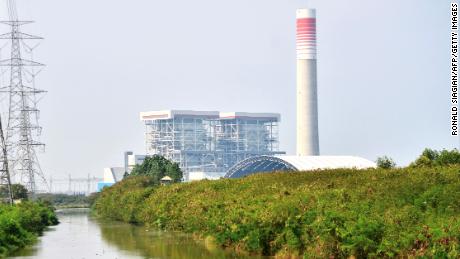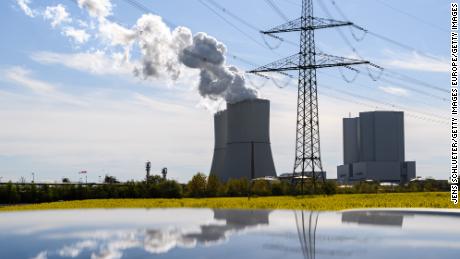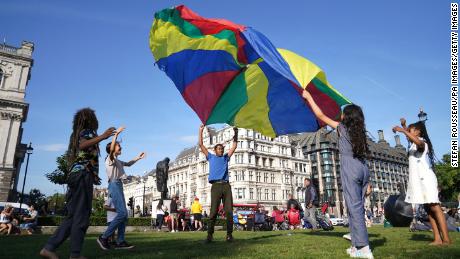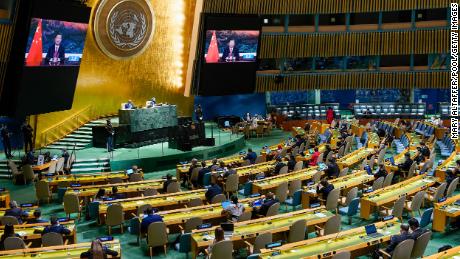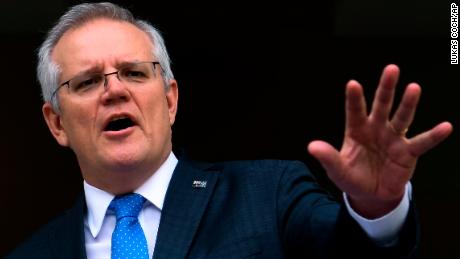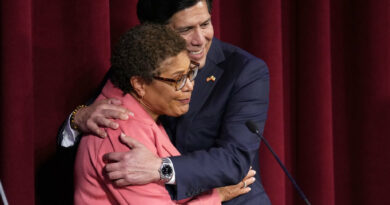Children to gather at Parliament Square in London in early September to read their Letters to the Earth, ahead of the COP26 conference in Glasgow.
(CNN)The COP26 international climate talks in Glasgow this November couldn’t come at a more crucial time.
A state-of-the-science report published by the UN in August showed that the world is warming faster than scientists previously thought, and that slashing greenhouse gas emissions by at least half this decade is crucial to staving off the more catastrophic impacts of the climate crisis.
This past year of deadly wildfires and floods in many parts of the world has left little doubt that climate change is here now, and is touching all corners of the Earth. UN Secretary General António Guterres on Tuesday appealed to world leaders to act, warning that humanity was on track for a climate “catastrophe.”
But there are signs of hope.
Alongside “Covid-19,” “climate” was the buzzword at the UN General Assembly in New York, and the US and China both announced new commitments to confront the crisis, suggesting that the world’s two biggest emitters may be willing to cooperate and take bolder action.
Here’s everything you need to know about the pivotal UN climate conference in November, and what world leaders hope to achieve.
What is COP26?
COP is short for the Conference of the Parties to the UN Convention on Climate Change, which is an event that takes place annually, though it was postponed last year because of the pandemic. World leaders do attend, but a lot of the discussions take place among ministers and other high-level officials working on climate issues. The 26 signifies that this is the group’s 26th meeting.
The conferences are massive events with a lot of side meetings that attract people from the business sector, fossil fuel companies, climate activists and other groups with a stake in the climate crisis. Some of them are successful — the Paris Agreement was hammered out during COP21, for example — and some are painfully unproductive.
More than 190 countries signed onto the Paris Agreement after the COP21 meeting in 2015, to limit the increase in global temperatures to well below 2 degrees Celsius above pre-industrial levels, but preferably to 1.5 degrees.
Half a degree may not sound like a huge difference, but scientists say any additional warming past 1.5 degrees will trigger more intense and frequent climate extremes. For example, limiting warming to 1.5 degrees instead of 2 degrees could result in around 420 million fewer people being frequently exposed to extreme heatwaves, according to the UN.
Scientists see 2 degrees as a critical threshold where extreme weather would render some of the world’s most densely populated areas into uninhabitable deserts or flood them with sea water.
Although the Paris Agreement was a landmark moment in the quest to address the climate crisis, it didn’t include details on how the world would achieve its goal. The subsequent COPs have sought to make the plans attached to it more ambitious and to detail courses of action.
“On paper, the Paris Agreement was always designed as a cyclical process — ‘see you in five years, with better plans and renewed efforts,'” said Lola Vallejo, the climate program director at the Institute for Sustainable Development and International Relations. “So right now, we are at this deadline, pushed back by Covid.”
What are the goals?
Alok Sharma — a British Member of Parliament and the President of COP26 — has said he wants this year’s conference to reach agreement on a number of key targets, including:
- Keeping the goal of “1.5 alive,” a target that some fossil fuel-producing countries have resisted, at least in terms of strengthening language around it in any agreement.
- Putting an end date on the use of “unabated” coal, which leaves open the possibility to keep using some coal, as long as the majority of greenhouse gas emissions from the fossil fuel are captured, preventing them to enter the atmosphere. Some scientists and activists groups have said all coal should be consigned to history.
- Providing $100 billion of annual climate financing, which wealthy nations agreed to, to help developing countries reduce fossil fuel emissions and adapt to the impacts of the crisis.
- Making all new car sales zero emissions within 14-19 years.
- Ending deforestation by the end of the decade, as forests play a crucial role in removing carbon from the atmosphere.
- Reducing emissions from methane, a potent gas with more than 80 times the warming power of carbon dioxide.
What is ‘net zero’ and why is everyone talking about it?
A lot of countries have committed to reaching “net zero” by midcentury. Net zero is when the amount of greenhouse gas emitted is no greater than the amount removed from the atmosphere.
To achieve net zero, countries and companies will need to rely on natural methods — like forests — to remove the same amount of carbon they emit, or use technology known as carbon capture and storage, which involves removing the carbon at the source of emission before it can enter the atmosphere. The carbon would then be stored or buried underground.
The good news is that the UN report from August found that if the world reaches net zero by midcentury, global warming can be contained to around 1.5 degrees Celsius.
But some scientists and activists say net zero targets are dangerous.
“The problem with net zero targets, both by companies and by a range of governments, is that many of them are really vague and there’s a risk that it becomes sort of a cover for business as usual,” said Aditi Sen, the climate policy lead at Oxfam America. “What really gets us to 1.5 degrees is aggressively cutting emissions now, over the next nine years.”
There are renewable and green alternatives to many of the biggest sources of emissions. Combustion engine vehicles can be replaced by electrical cars. Coal power plants could be shut down in favor of renewable energy generation from things like wind and solar.
But some emissions are difficult, even impossible, to eliminate. For example, the world does not yet have a clean way of making steel at a large scale, though some smaller enterprises are doing it. Those emissions will likely need to be offset by removing carbon from the atmosphere.
What’s the role of the US and China here?
Many a COP has been derailed by the relationship between the US and China.
For years, the US wouldn’t support the Kyoto Protocol, which preceded Paris, unless China signed on. The agreement initially didn’t require China, India, Brazil and other developing economies to reduce emissions.
But developments at the UN General Assembly gave cause for hope. US President Joe Biden announced Tuesday he would double America’s financial commitment to help developing nations confront the climate crisis to $11.4 billion per year. He will need Congress’ approval to appropriate those funds.
It’s a U-turn from the years under the previous US administration, when then-President Donald Trump withdrew the US from the Paris Agreement.
Chinese President Xi Jinping also made a big announcement Tuesday, saying his country will not build any new coal-fired power projects abroad. Though China itself remains the world’s largest consumer of coal, the announcement effectively ends a long history of China bankrolling coal plants in places like Africa, eastern Europe and Southeast Asia.
Xi also said China would begin transferring money to the developing world as well, elevating China’s status in future talks.
The announcements bring the China and the US closer in step on climate action and may be a harbinger of future progress between the two nations. US climate envoy John Kerry has been pressing China to be more ambitious in its emissions goals, which are currently to peak emissions before 2030 and reach net zero by 2060.
Which other countries should I look out for?
Under the Paris Agreement, countries submitted their pledges to cut emissions, also known as Nationally Determined Contributions, or NDCs. All signatories were supposed to update their NDCs by July 31 this year, but around 70 have yet to do so.
While there have been positive signs coming from some of the world’s biggest polluters, a number of countries are appear to be going into the meeting with the goal of pushing against higher, more ambitious targets. The Australian government has made no secret of the fact that it is planning to keep mining coal “well beyond 2030.
Russia, a major fossil fuels producer, is another country observers are worried about. While the Russian President Vladimir Putin has said his country was committed to the cause, the plan Russia submitted was described by experts as one that doesn’t amount to meaningful change.
India, Saudi Arabia and Turkey are among countries that missed the July 31 deadline. China has announced a new target, but hasn’t formally submitted it to the UN.
Australia, Brazil, Mexico, New Zealand, Russia and and many other countries have failed to increase their targets, submitting the same or even less ambitious 2030 targets than those they put forward in 2015.
“We’re really expecting countries to come up with new and enhanced commitments,” Vallejo said.
“Some countries haven’t submitted pledges or those that have submitted pledges, a good share of those are still insufficient, the majority are not exactly in line with 1.5.”
Source: Read Full Article

